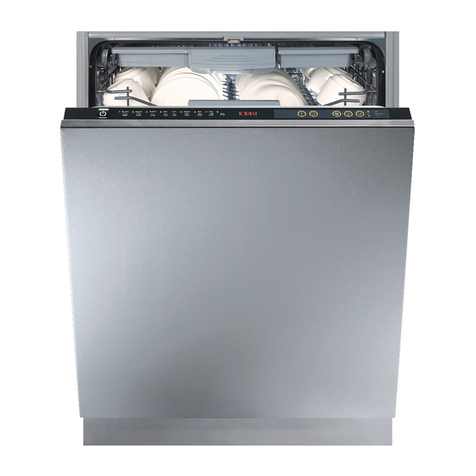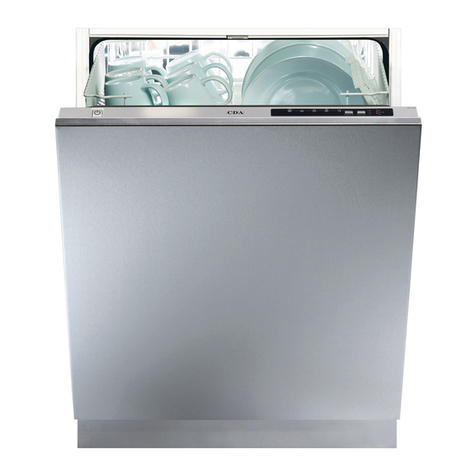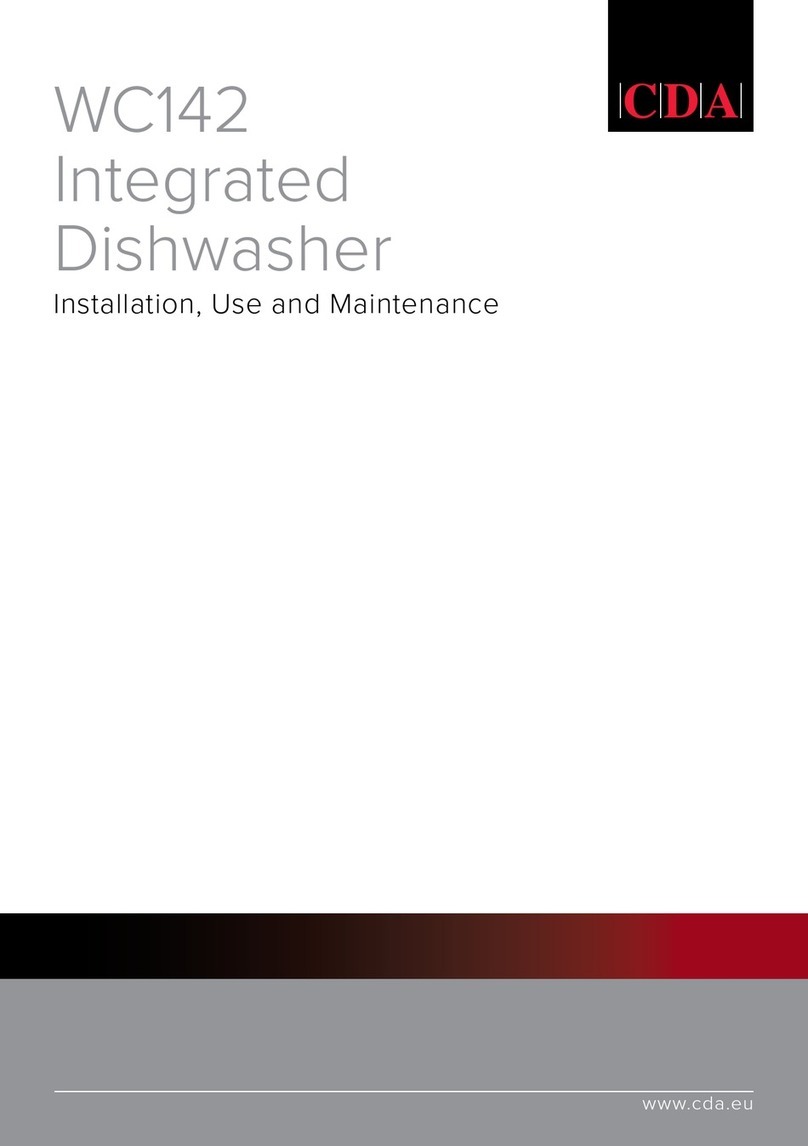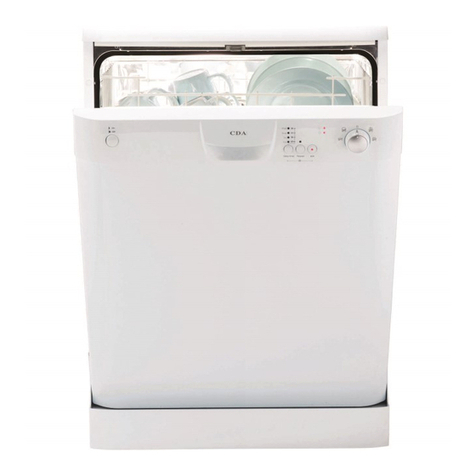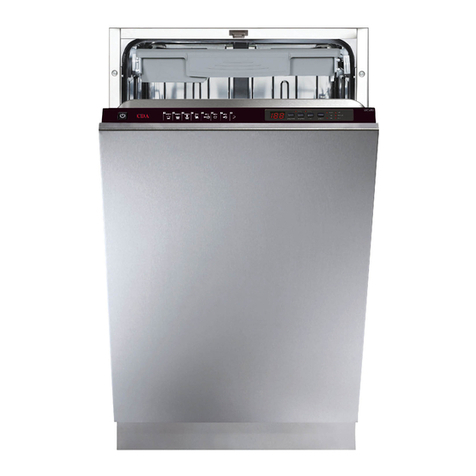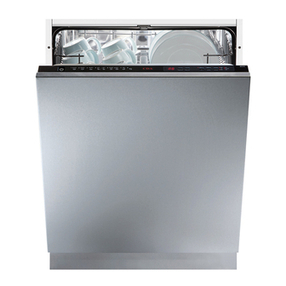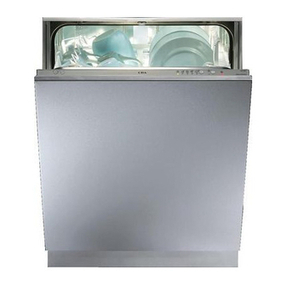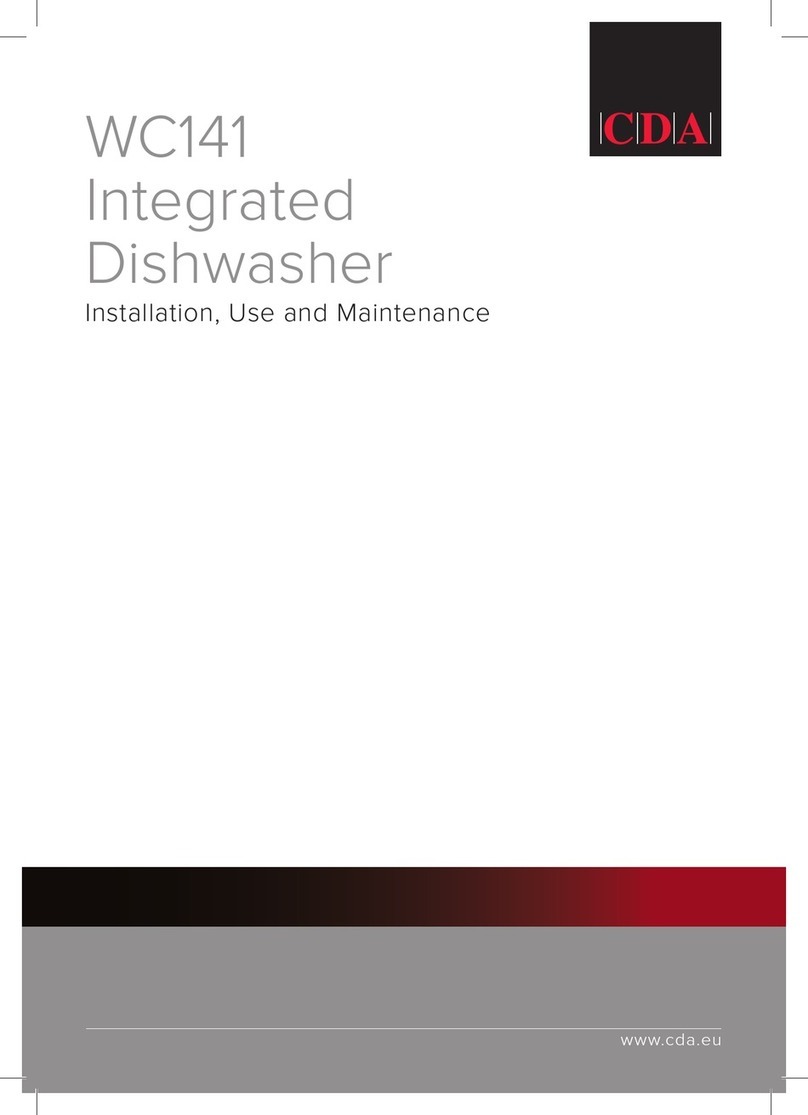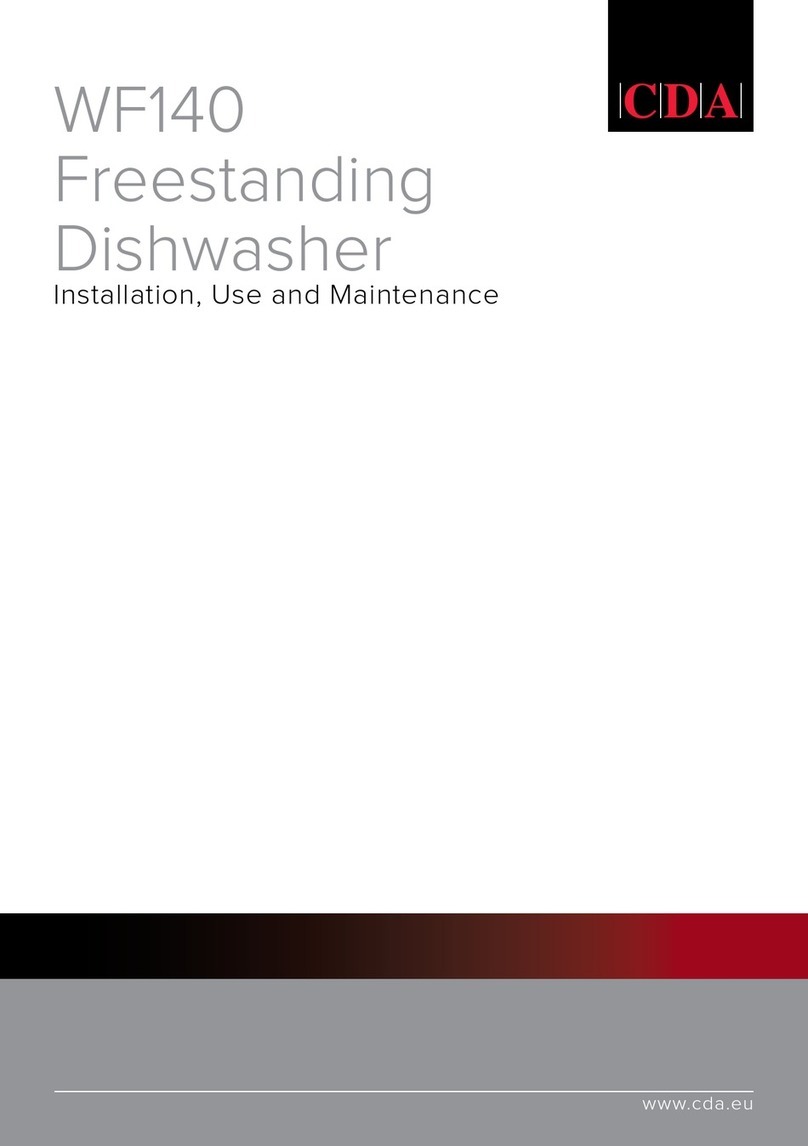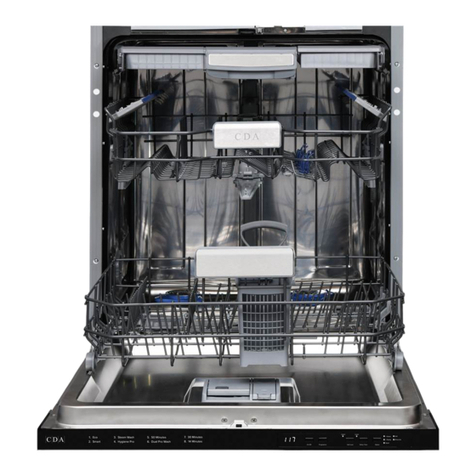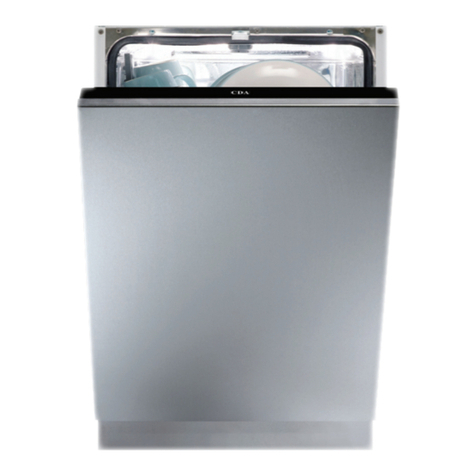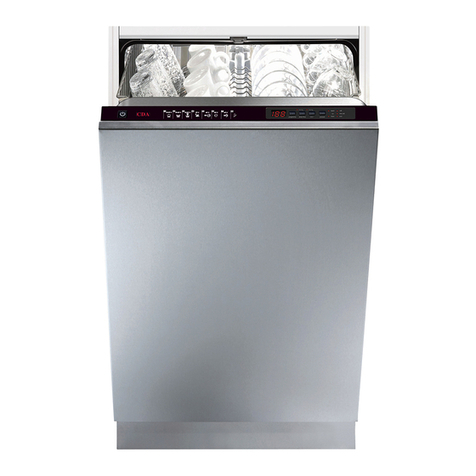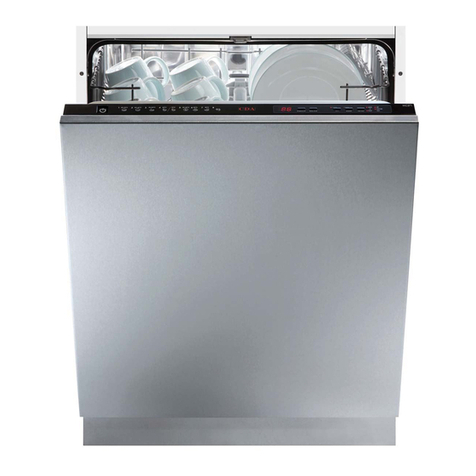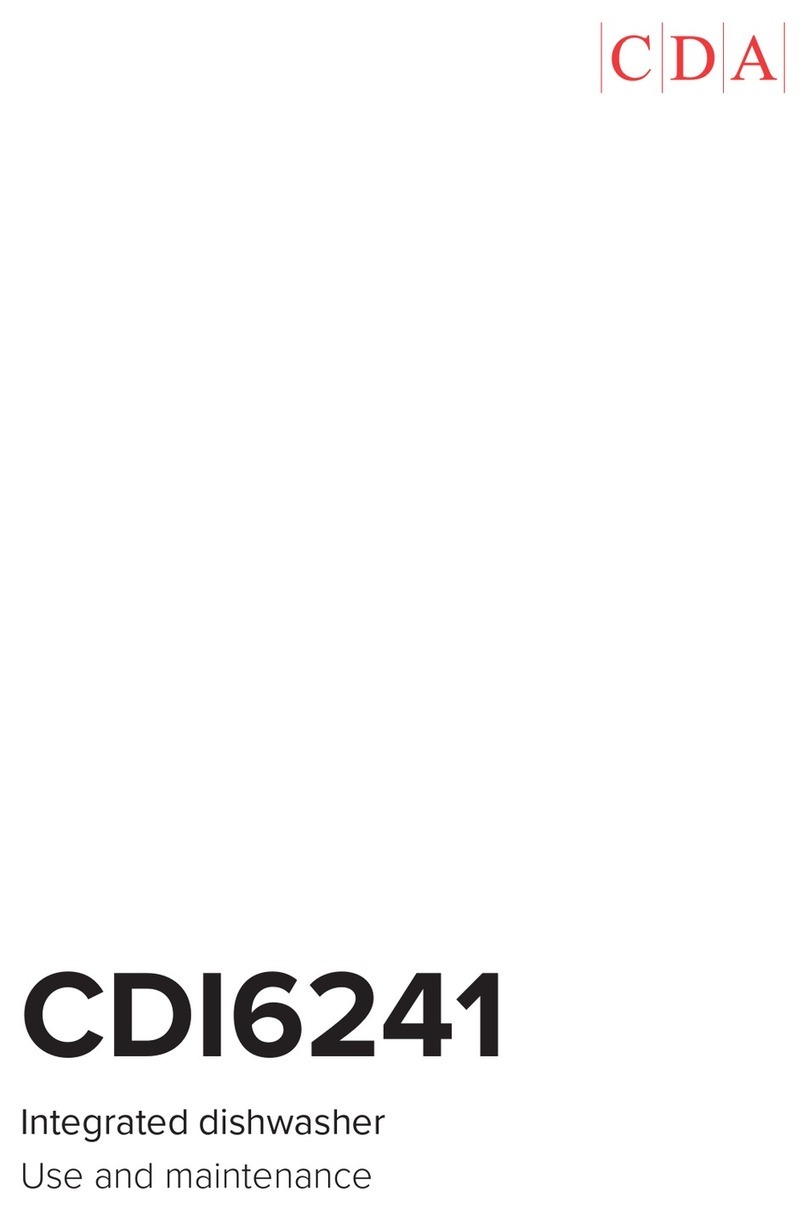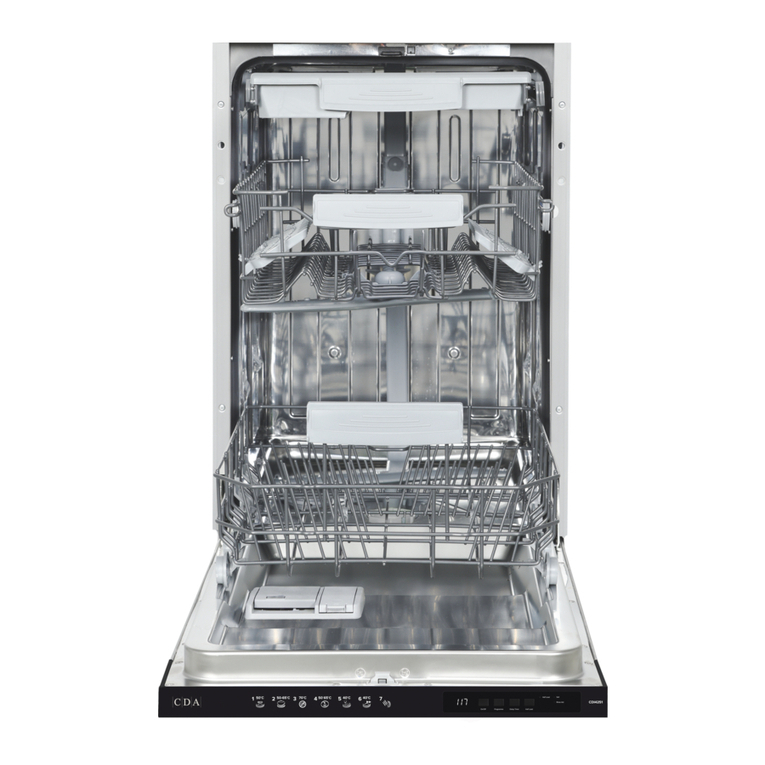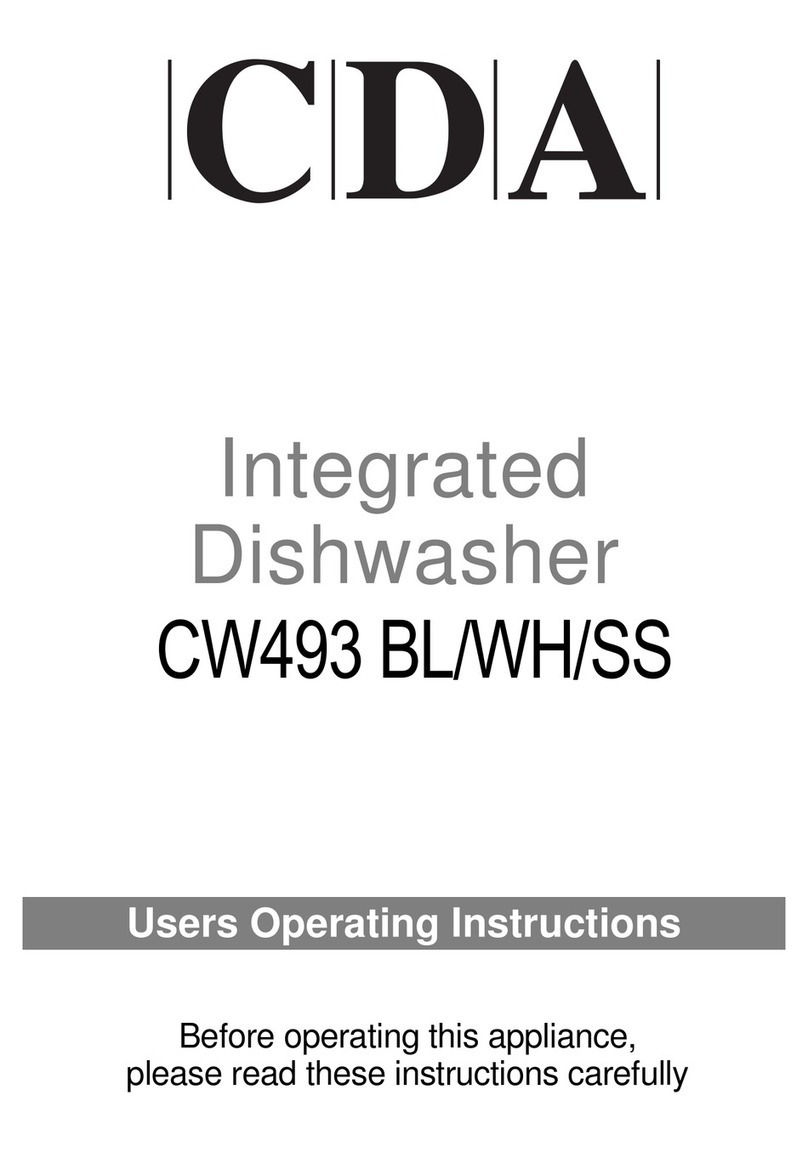
8
• To set the delay timer, press the delay timer button (4). This will
switch the timer on for one hour.
• To change the delay duration, press the delay timer button again
until the required delay duration is shown on the display, alternating
with the selected programme and the programme duration. You can
hold the timer button to cycle through hours faster.
• To cancel the delay timer, press the delay timer button again until
the display counts down through 3-2-1.
3 in 1 function indicator (5)
The dishwasher is equipped with a tablet function that automatically
adjusts the amount of rinse aid and dishwasher salt used during a
programme when combined tablets are used.
• To use this function, press the button (A in Fig. 2) after selecting the
programme, before you close the door.
Half-load button (6 and 8) and indicator lights
The dishwasher is equipped with a half-load function
that allows for either the upper or lower basket to
be washed independently, or for both baskets to be
washed if they contain only a small number of dishes.
• To use this function, press the half-load buttons (B
in Fig. 2) until the indicator light shows next to the
required section of the dishwasher, either upper,
lower or both lights if both baskets are to be washed
together. Each press of the buttons cycles through
the options (including cancel/no option).
Fig. 2
A
B
Dotted circles show
locations of button
sensors.
